 |
 |
 |
| |
Obesity Rate Differs by HIV Status, Gender, Race, and ARV Use in North Carolina
|
| |
| |
7th IAS Conference on HIV Pathogenesis, Treatment and Prevention, June 30-July 3, 2013, Kuala Lumpur
Mark Mascolini
HIV-positive women in North Carolina have higher age- and race-adjusted obesity prevalence than women in the general population, but the opposite is true for men [1]. In people with HIV, obesity prevalence rose significantly from 2004 through 2010 in white and black men and black women.
Rates of obesity--a body mass index at or above 30 kg/m(2)--are on the rise across the United States. Nearly one third of North Carolina residents are obese, and the state ranks sixteenth in obesity prevalence. Obesity and obesity-related diseases are more prevalent in southern US states than elsewhere in the country, and several obesity-related diseases (hypertension, cardiovascular disease, diabetes) affect some HIV-positive populations more than HIV-negative comparison groups.
A recent CDC study of 23 health jurisdictions across the United States determined that 23% of HIV-positive people are obese, compared with 36% of the general population [2]. Age-adjusted obesity prevalence was 40% in women with HIV compared with 36% among women in the general population women, while HIV-positive men had a much lower obesity prevalence than general-population men (17% versus 36%).
To learn more about obesity rates by gender, race, age, and antiretroviral treatment, University of North Carolina (UNC) researchers collected data from the UNC Carolina Data Warehouse for Health and the North Carolina Behavioral Risk Factor Surveillance System (BRFSS). They used standard cutoffs to categorize people as having normal body mass index (18 to 24.9), being overweight (25 to 29.9) or obese (30 or greater). The investigators excluded underweight people from the analysis. They used ICD-9 codes to identify UNC patients at least 18 years old with HIV infection and selected the same age group from the BRFSS population. The investigators standardized both cohorts to the North Carolina age and race distribution of the 2010 US Census. They also modeled age-adjusted obesity prevalence among HIV-positive adults as a function of cumulative and class-specific antiretroviral use, defined as lifetime exposure to the date of the last body mass index measurement.
The analysis included 2060 men and 995 women with HIV and 37,417 men and 61,070 women in the general-population BRFSS cohort. Among people with HIV, 58.1% were black and 30.4% white, compared with 17.5% black and 70.7% white in the general population. Three quarters of HIV-positive people (75.4%) had taken any antiretroviral, 49.1% had taken any nonnucleoside, and 27.1% had taken any protease inhibitor.
For the years 2004-2010, age-adjusted obesity prevalence was slightly lower among HIV-positive people than in the general North Carolina population (25.2% versus 28.2%). But as in the national CDC study [2], age-adjusted obesity prevalence was higher in HIV-positive women than in general-population women (39.8% versus 28.1%). And a lower proportion of men with HIV than men in the general population were obese (17.7% versus 26.6%). In an age- and race-adjusted analysis, obesity prevalence was almost the same with HIV and in the general population (27.3% and 26.8%) but again higher in women with than without HIV (34.8% versus 29.0%) and lower in men with than without HIV (16.5% versus 27.1%).
In age-adjusted analyses for women, black women with and without HIV had high obesity rates (43.3% with HIV versus 46.3% without HIV). White women had a lower obesity prevalence than black women, but the rate was much higher with than without HIV (32.1% versus 23.9%). Obesity prevalence in black men with HIV was almost half the rate among black men in the general population (18.6% versus 33.4%), and white men with HIV also had a much lower obesity rate than white men in the general population (16.3% versus 25.6%).
From 2004 through 2010, obesity prevalence rose significantly in the HIV group among black men, white men, and black women (P < 0.001) but stayed relatively stable among white women. Among men but not women with HIV, obesity prevalence rose gradually with each year of protease inhibitor exposure. For black men obesity rates after 1, 2, and 3 years of protease inhibitor therapy were 14.7%, 14.9%, and 22.4%. For white men those rates were 15.5%, 15.8%, and 23.7%. Among women but not men with HIV, obesity prevalence rose with each year of nonnucleoside exposure. In black women obesity rates after 1, 2, and 3 years of nonnucleoside use were 42.0%, 40.1%, and 45.9%; and in white women those rates were 33.1%, 31.6%, and 36.1%. The researchers speculated that these differences could reflect differences in antiretroviral tolerance and pretreatment body mass index between men and women.
In the national CDC study, 44.7% of HIV-positive women 20 to 39 years old were obese, compared with 31.9% of women that age in the general population and 17.4% of men that age with HIV [2]. Logistic regression analysis adjusted for age, race, poverty, years since HIV diagnosis, and durable HIV suppression determined that women with HIV had a twice higher adjusted prevalence ratio for obesity than men (aPR 2.12, 95% confidence interval 1.87 to 2.41).
Reference
1. Menezes P, Keys J, Wohl D, Eron J. Obesity prevalence and cumulative antiretroviral exposure among HIV-positive adults in clinical care at University of North Carolina (UNC), 2004-2010. 7th IAS Conference on HIV Pathogenesis, Treatment and Prevention, June 30-July 3, 2013, Kuala Lumpur. Abstract MOPE065.
2. Thompson-Paul A, Wei S, Mattson C, Skarbinski J. Prevalence of obesity in a nationally representative sample of HIV+ adults receiving medical care in the US: Medical Monitoring Project, 2009. 20th Conference on Retroviruses and Opportunistic Infections. March 3-6, 2013, Atlanta. Abstract 777. http://www.natap.org/2013/CROI/croi_76.htm
ki J. Prevalence of obesity in a nationally representative sample of HIV+ adults receiving medical care in the US: Medical Monitoring Project, 2009. 20th Conference on Retroviruses and Opportunistic Infections. March 3-6, 2013, Atlanta. Abstract 777. http://www.natap.org/2013/CROI/croi_76.htm
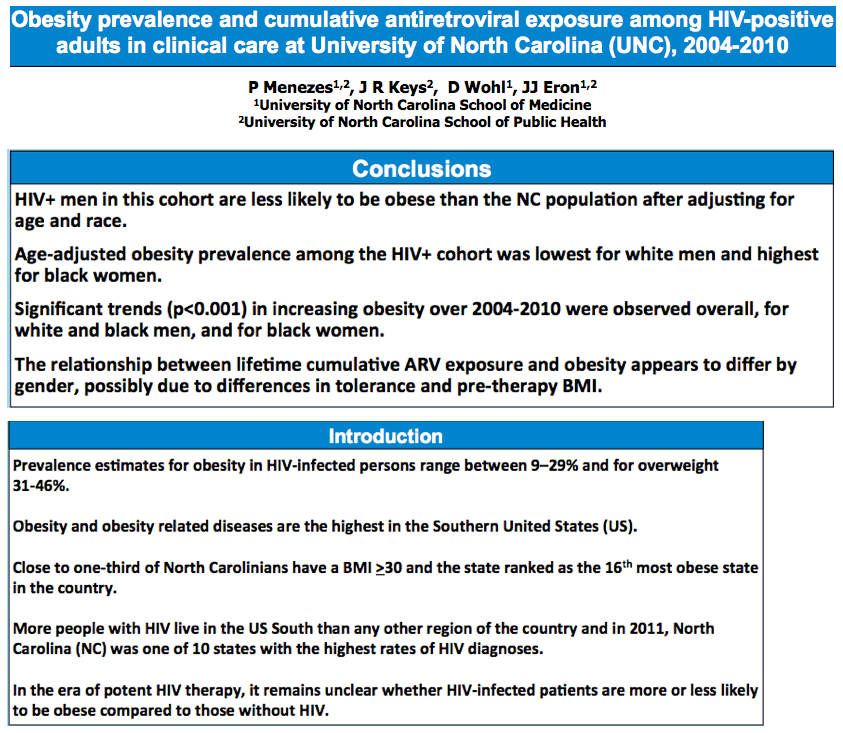
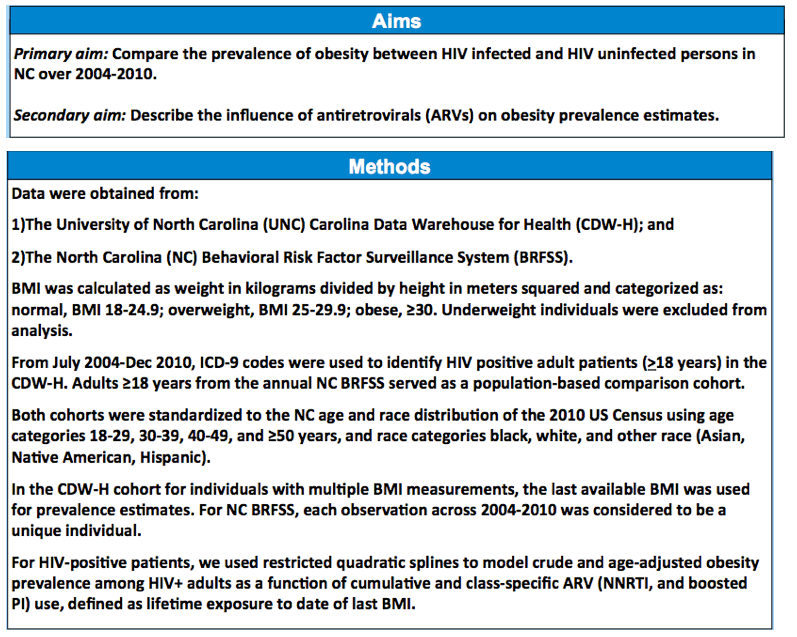
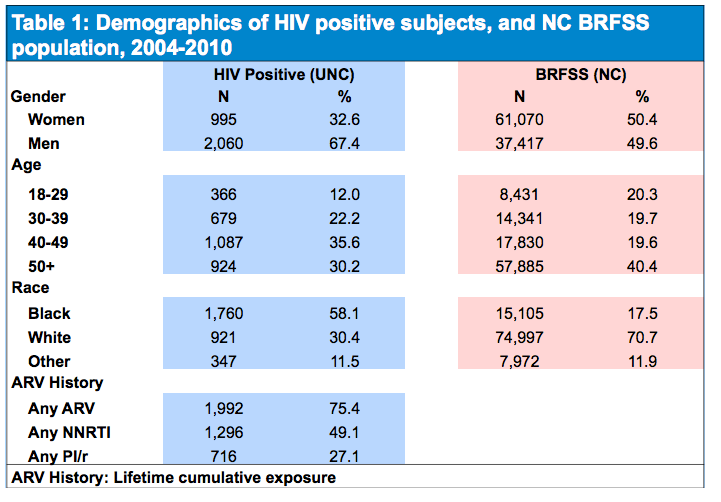
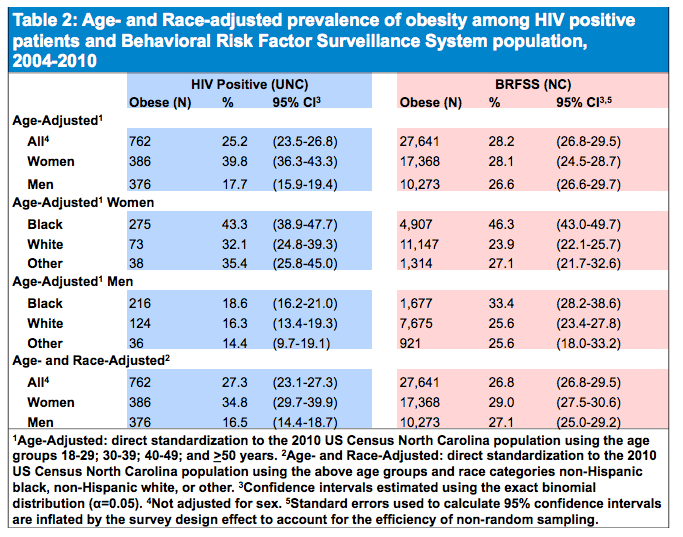
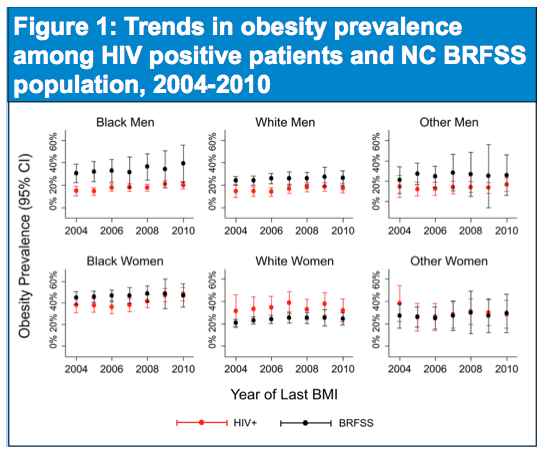
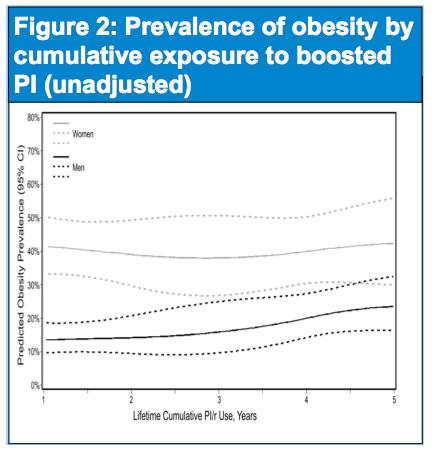
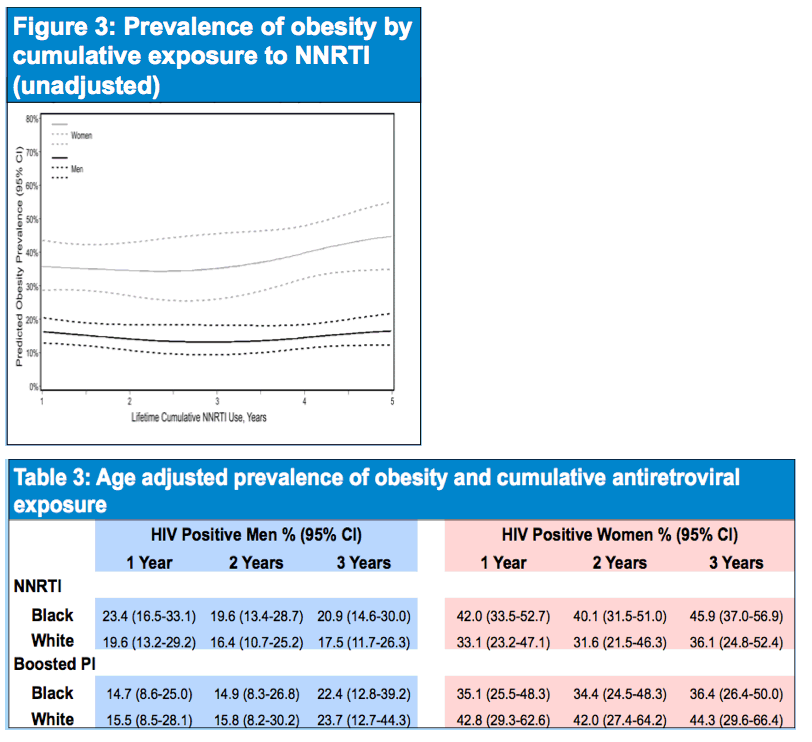
|
| |
|
 |
 |
|
|